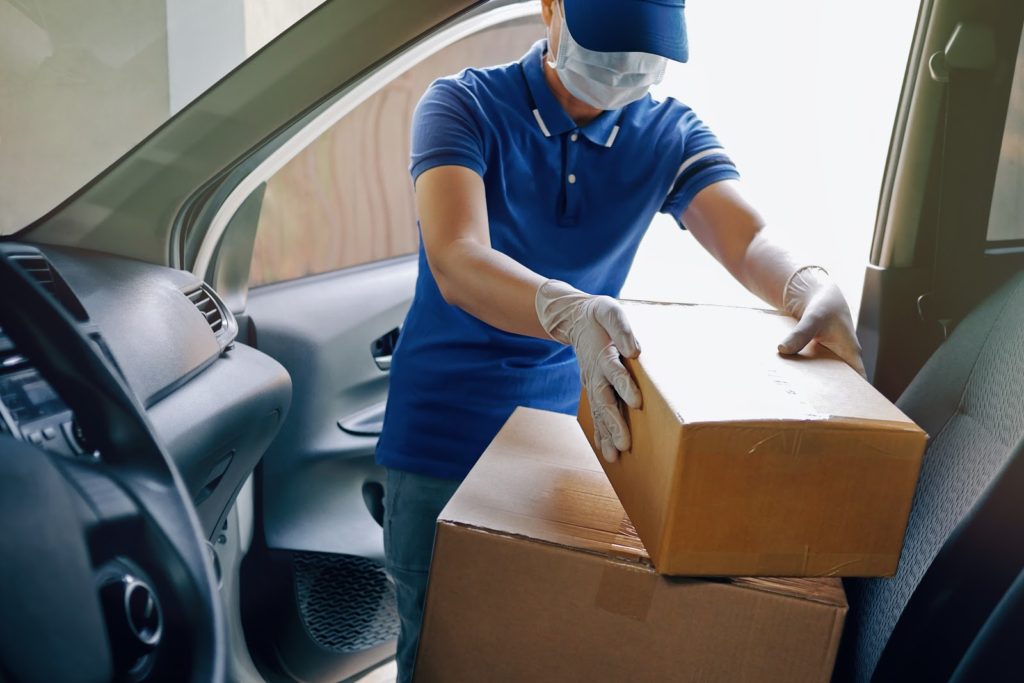What Your Delivery Drivers Need to Know about COVID-19
As a FedEx contractor, you employ a team of drivers to carry out deliveries along your routes and keep your business running smoothly. And like any business owner, you are responsible for the health and safety of those drivers while they are on the job. Nowadays, that means making sure they are aware of the latest expert recommendations and best practices for preventing the spread of COVID-19.
COVID-19 is the disease caused by the SARS-CoV-2 virus, and as of this writing more than 3 million cases have been confirmed in the United States alone.
Since the first cases were reported earlier this year, businesses across the country have struggled to maintain a balance between staying profitable and keeping their staff and patrons safe. For many, that has meant a shift from in-store sales to primarily online purchases, a move that has had a direct impact on FedEx delivery contractors. After all, more online shopping means more shipping, which means more packages in transit nationwide.
Did you know the CDC has issued helpful guidelines for mail and parcel delivery drivers?
In light of the recent uptick in deliveries, experts at the Centers for Disease Control and Prevention (CDC) have issued new guidelines for mail and parcel delivery drivers in the United States, who are at an increased risk of exposure to COVID-19 due to the nature of their work.
Along with observing important CDC recommendations for business owners, make sure your drivers adhere to the following practices posted on the CDC website:
Stay home if you are sick
- If you develop a fever or symptoms, such as cough or difficulty breathing, call your healthcare provider for medical advice before visiting their office.
- You should not return to work until the criteria to discontinue home isolation are met, after talking with your doctor.
Wear a cloth face covering
- CDC recommends wearing cloth face coverings in public settings where other social distancing measures are hard to do, especially in areas that have high rates of COVID infection.
- Cloth face coverings may help prevent people who don’t know they have the virus from spreading it to others.
- These face coverings are not surgical masks or respirators and are not appropriate substitutes for them in workplaces where masks or respirators are recommended or required.
Limit Contact
- Practice contactless deliveries whenever you can. Contactless deliveries allow you to leave a delivery at a doorstep, move back to a distance greater than 6 feet away while verifying receipt of the delivery with the recipient (if required), and try to do everything electronically whenever you can (e.g., in an app or over a phone). This eliminates the need for close contact between you and delivery recipient.
- Maintain a distance 6 feet or greater from others you might meet or need to speak to while making your deliveries.
- Limit contact with frequently touched surfaces during deliveries, such as doorbells or door handles. Use a foot, shoulder, elbow, hip, or forearm when opening doors, instead of hands, if possible.
- Avoid sharing scanners, pens, or other tools with customers.
- If you are wearing machine-washable work gloves normally worn for the job throughout your shift, do not touch your face with gloved hands. Remove them and wash hands before eating. At the end of the work shift, remove the gloves, store them for washing, and wash your hands. When doing laundry, wash gloves using the warmest appropriate water setting and dry them completely.
Clean and Disinfect
- If surfaces are visibly dirty, they should be cleaned with detergent or soap and water prior to disinfection.
- Carry cleaning and disinfectant disposable wipes, if available, and a trash bag with you in your vehicle. Follow the directions on the cleaning product’s label.
- Clean and disinfect frequently touched surfaces of the delivery vehicle (particularly if it is shared) at the start and end of the shift. These include the steering wheel, gearshift, signaling levers, and door handles.
- Wipe down pens, clipboards, and electronic signature pads after each use with the public if shared when performing a delivery.
- Appropriate disinfectants for hard non-porous surfaces include:
- EPA’s Registered Antimicrobial Products for Use Against Novel Coronavirus SARS-CoV-2
- Diluted household bleach solutions prepared according to the manufacturers label for disinfection, if appropriate for the surface
- Alcohol solutions with at least 70% alcohol.
Practice Everyday Preventive Actions
- Avoid touching your eyes, nose, or mouth.
- Proper hand hygiene is an important infection control measure. Keep in mind where you can access and use facilities with soap and water during your shift. Wash your hands regularly with soap and water for at least 20 seconds or use an alcohol-based hand sanitizer containing at least 60% alcohol.
- Key times to clean hands include:
- Before, during, and after preparing food
- Before eating food
- After using the toilet
- After blowing your nose, coughing, or sneezing
- Additional times on the job to clean hands include:
- Before and after work shifts
- Before and after work breaks
- After putting on, touching, or removing cloth face coverings
- Before and after making deliveries, including after picking up from drop-boxes and customer pickups
- After touching frequently touched surfaces, such as doorbells or door handles
- Before wearing and after removing cold-weather gloves
- Before and after pumping gas
- Carry tissues in your vehicle to use when you cough, sneeze, or touch your face. Throw used tissues in the trash.
Your drivers are the lifeblood of your business; make sure they stay safe and healthy.
You invested a lot of time and effort in finding, hiring, and training a top-notch team of delivery drivers. With the recent increase in delivery volume happening in almost every area of the country, it is in your best interest to ensure your drivers have the tools and resources necessary to stay safe and healthy on the road. By doing so, you are protecting not just your workers but your entire FedEx route business.
Visit the KR Capital blog for more tips on building a winning FedEx team, plus everything you need to know about buying and selling your FedEx routes.




